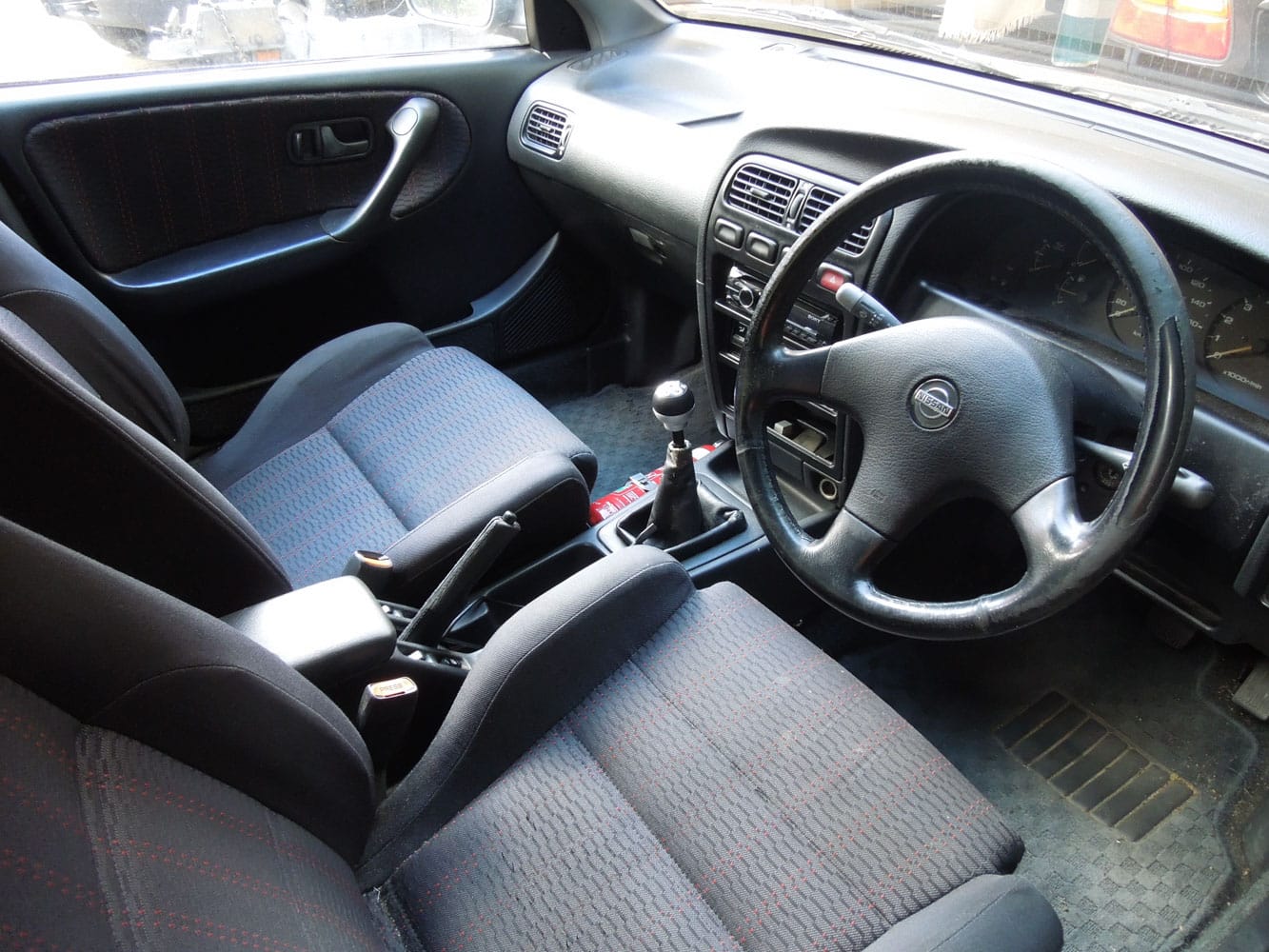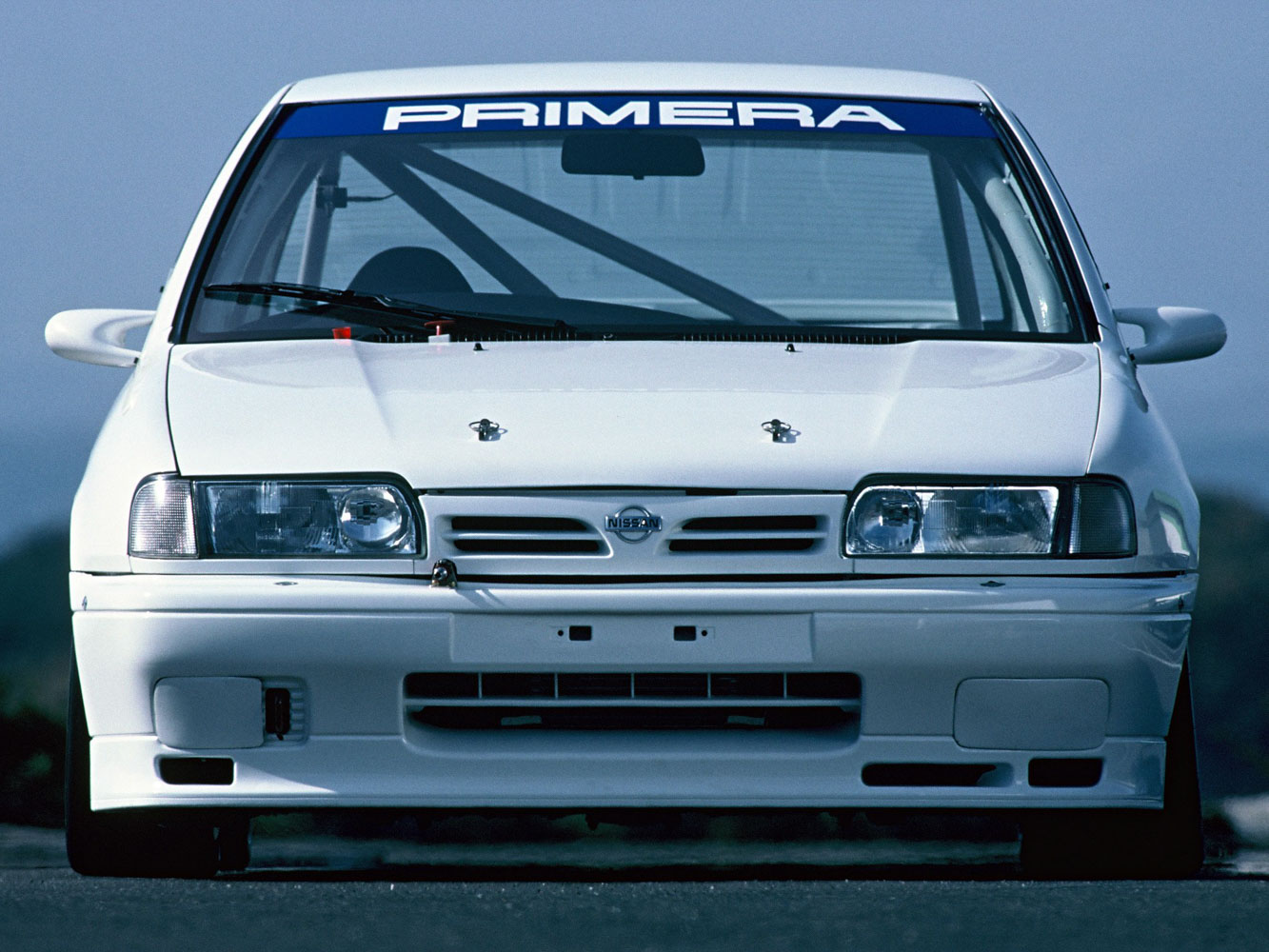
With racing heritage from the famous British Touring Car Championship (BTCC) and Japanese Touring Car Championship (JTCC) series of the ’90s, and a price tag of under $2500, why wouldn’t you buy a Nissan Primera TE P10? Weighing in at just over 1240kgs, combined with an east-west–mounted SR20DE engine with 110kW (148hp), the Nissan Primera has huge potential for going fast as there are countless engine modifications and conversions available. With a few simple modifications from other Nissans around the scrapyard, you can turn the P10 into a real monster.
Engine

If you’ve ever driven a naturally aspirated SR20 engine, you’ll know that for what they are, they are torquey little buggers. With an 86x86mm bore-to-stroke, the SR20 engine is able to both rev fairly high, and produce a decent amount of torque for their given capacity and aspiration.
Although not a world beater, the factory motor does have a decent amount of potential; so if you do want to leave the original motor in the hole, there are a few things you can do to get some better numbers. First off, the factory exhaust system and intake are fairly restrictive; replace the exhaust with a mandrel-bent 2.25-inch to 2.5-inch system from the headers back, and the intake with a three-inch alloy pipe, pod filter, and cold-air box.
All are a given, as with most naturally aspirated engines, but with the Primera, the real results come from tuning the factory ECU with an aftermarket daughter board, or EPROM. The EPROM acts as a fully tunable ECU and it gets socketed into the factory ECU, so you retain all the nice factory features. Very good gains are to be had once a daughter board has been installed, and, the best part about it, is that once you have upgraded the engine further, you can have it retuned to suit.

If you’re after a little more power, but still want to stay N/A, the SR20VE engine out of the Nissan Primera P11 bolts straight in. The SR20VE engine features ‘Neo’, which is essentially Nissan’s version of Honda’s Vtec hardware. We won’t get into immense detail as to how Neo works, but like Vtec, it operates using hydraulic pressure which operates a seperate lobe on the camshaft for a huge increase in valve lift and duration. The camshafts have two different lobes per valve; one best suited to low-rpm torque, and one with a much larger lift and duration to suit high-rpm power output. With the same modifications listed for the SR20DE, you should net a solid 20-30kW more peak power with the VE.
If you’re addicted to turbo, and the SR20VE doesn’t give you as much power as you’d like, there is good news for you; the SR20DET engine in multiple variations drops straight in too. The Nissan Avenir W10 SR20DET turbo engine features stronger internals than the SR20DE and is fitted with a small Garrett T25 turbo; these engines produce 157kW (207hp) from the factory and are your cheapest turbo option. The Avenir W11 SR20DET turbo engine is your next best bet — the engine itself received minimal changes — but the turbo was upgraded to a ball-bearing T25, and, because of this, the power was raised to 169kW (227hp). The ball-bearing turbo on this engine is super responsive, and although it doesn’t make the most power, it sure makes for a fun car to drive. Last, but certainly not least, is the N14 GTI-R SR20DET engine. Featuring quad throttle bodies, a much larger Garrett T28 frame turbo and bigger injectors than the other engines, this is the one to look out for if you’re chasing over 200kW without upgrading to a larger turbo. If you still have the daughter board installed, serious gains can be had with a Z32 afm, 550cc injectors, and a boost controller.
Exterior/interior aesthetics

If you don’t have the TE model Primera, you will most certainly have the lower-spec model, which has unsupportive, very ugly chequered seats. Fortunately, the TE model came with very supportive black with red–stitched seats similar to the older Recaro seats. These are obviously a direct bolt-in and improve the overall look and feel of the previous inferior interior. The facelift TE came with a different trim entirely; the same seats, but a different material and much lighter colour — so it all depends on what look you are after. The same theme goes with the exterior, the TE model came with much larger bumpers and side skirts, which bolt straight on.
Driveline and suspension/handling

If you went the full monty and opted for one of the various SR20DET engines, you have probably realized by now that traction is a serious problem. If your P10 doesn’t have an LSD gearbox, but instead the open diff, this should be your next modification to ensure that you don’t wheel spin your way down the road; that, and third gear tends to blow to pieces with a power increase.
There are a few options depending on your power levels; the Nissan Pulsar N15 VZ-R gearbox has an LSD, but is a very close-ratio unit — perfect for keeping the SR16VE unit on song. This unit is great for your modified naturally aspirated SR20DE/VE, but not ideal for the SR20DET. If you did opt for the turbo engine, some P10 and P11 Primeras came with LSD gearboxes from the factory, so track one down — along with a heavy-duty clutch, as the stock unit won’t last long at all.

Now that your Primera goes fast, you’re going to want to be able to stop at some stage. There are a few affordable upgrades such as the Avenir W10 turbo calipers, as they are twin pot, run a larger disc, and best of all are a direct bolt-on. By far the best upgrade however, is the Nissan Skyline R32 GTS-T, Sumitomo, four-pot caliper. The caliper bolts straight up, but you will need to do some other modifications to get the disc to fit. The disc itself needs 6mm machined off of the radius, and you will need the top hat redrilled for the Primera’s 4×114.3 stud pattern. The next hurdle is getting custom brake lines made; this is fairly affordable and can be done through any brake specialist company. Once you have everything bolted up, get some high-quality pads and you’ll out stop most things out there.
As far as suspension goes with the P10 chassis, the best upgrades you can do are fairly straightforward. Purchase either a good set of shocks, like Bilstein, or KYB SR Specials, mated to a good set of lowering springs. If the budget permits and you have the coin for a cert, opt for a complete height and damper adjustable coilover package. The P10 chassis responds extremely well to a larger rear sway bar, so this should also be considered. P10 Primeras are getting fairly old now, so it’s a good a idea to jump under the car and replace all the bushes that have worn out with Nolathane or a similar urethane compound, which should really stiffen things up and help eliminate some of those pesky squeaks.
Results

Now that you’ve completed every available scrapyard modification for your TE Primera, you now have a car that weighs around 1200kgs, and packs anywhere from 120kW–220kW at the wheels depending on how wild you went. You have a car that is very capable at the racetrack that will out-handle and out-brake a lot of other affordable cars on the market, and even some big dollar cars like the Mitsubishi Evos. The Nissan SR20 engine is one hell of an engine from the factory, but you do need to keep them maintained for engine longevity — especially if turbocharged. They have very small oil galleries, which, if not properly maintained with frequent oil changes, can block up very easily and starve the head of oil. None of the above engine modifications should be completed if you have an unhealthy engine or vehicle, so make sure to give your engine a once over before starting, and ensure you have a solid base to make some good power. Another thing to note, SR engines have quite a small oil capacity, so when hitting tracks like Hampton Downs Motorsport Park, ensure you have a baffled, or larger capacity sump. Something else to consider is that if you plan to retain the airflow meter set-up, don’t run oiled filters such as the K&N filter. These will coat the ‘hot wire’ inside the AFM, which will result in poor fuel ratios, loss of power, and a higher fuel consumption.
This article was originally published in a previous issue of NZ Performance Car. Pick up a copy of the edition here:













